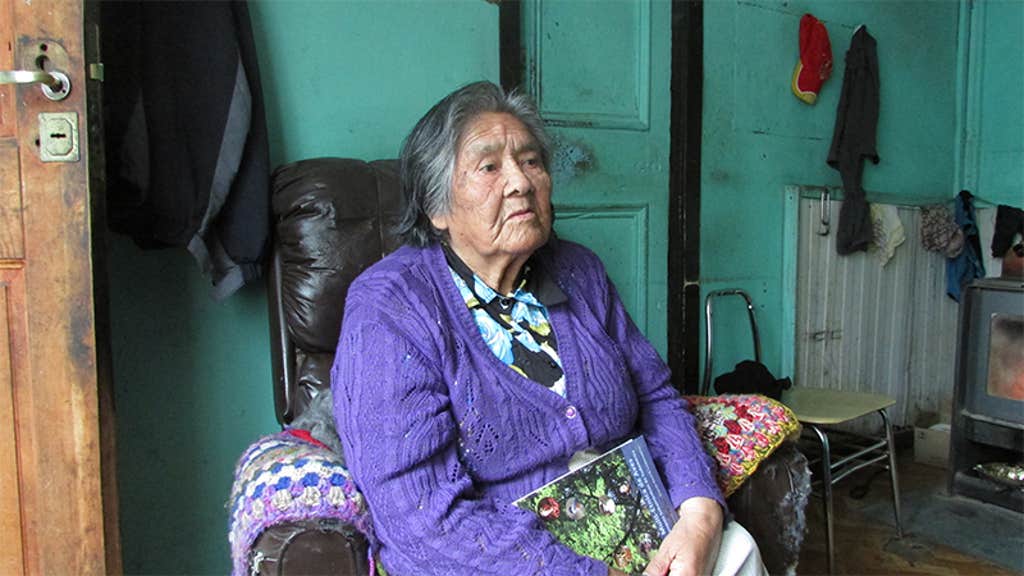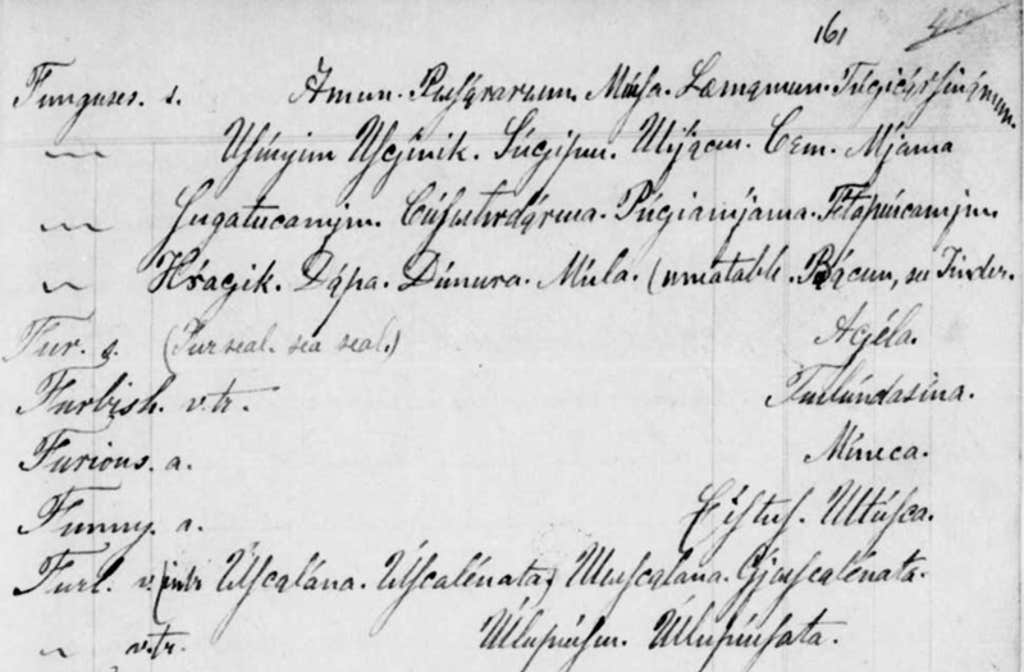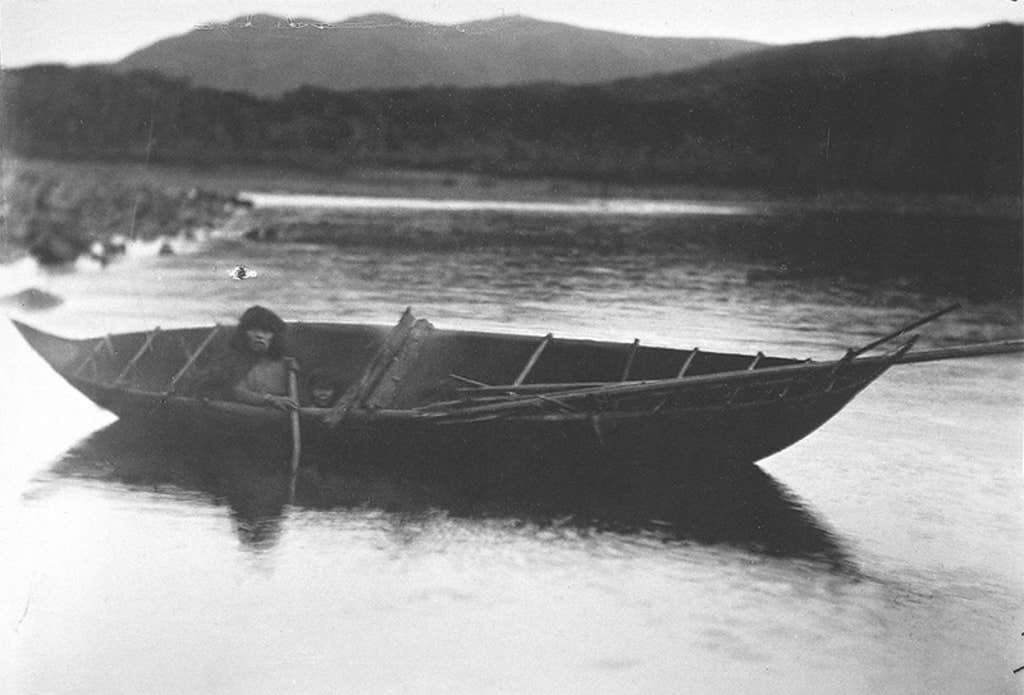Deep in the southern hemisphere, where frigid waves lap against the toe of the South American continent, the sea has no single name. Locals have called it tāralömbi when the water is perfectly calm. Čilamaii are the swells that gather along the coast, mötālömön is the roughening of the water by western breezes. Döna is the term when certain winds ruffle the ocean’s surface in such a way that the movement of fish underneath cannot be discerned and canoes must return ashore.
The Indigenous Yaghan people who have spoken these words are native to Tierra del Fuego—the mosaic of islands, fjords, channels, bays, and coves created by the submerged foot of the Andean mountains in southern Argentina and Chile. The Yaghan and their ancestors are thought to have persisted in this harsh, windy, and cold seascape for thousands of years. There, they have built canoes, from which they hunted sea lions and seals with harpoons. They have caught fish, gathered mussels, made ornaments, and celebrated rites of passage. They have roamed far and wide.
The last truly native speaker of Yaghan, Cristina Calderón, died in 2022. Up to a few hundred members of the group are still alive today—including Calderón’s granddaughter Cristina Zárraga and others who are working to revitalize the language; Yaghan is classified as “dormant” by the Endangered Languages Project.
Dictionaries, it turns out, can be excavated for rich information missing from the archeological record.
Although archaeologists have long been fascinated by the deep history of this seafaring, nomadic people, many of the physical remains their ancestors left behind have been lost to time. Fortunately, they have also left clues in the Yaghan language.
The Yaghan words for the sea were exhumed from a 19th-century Yaghan-English dictionary compiled in the late 1800s by an Anglican missionary. In a recent paper in the International Journal of Historical Archaeology, a team of Norwegian scholars argue that studying this historical snapshot of Yaghan could yield important clues about these people’s lives over the centuries. The same approach could be used for potentially hundreds of other languages, dead, alive, or dormant, across the globe to better understand old ways of life, ancient ecologies, and humans’ connection to the landscape.
Dictionaries, such as the one created for the Yaghan language, it turns out, can be excavated for rich and nuanced information missing from the physical archeological record.
“You could think about language in a similar way as we think about the archaeological sites in a landscape,” says the lead author of the new research, archaeologist Jo Sindre Eidshaug of the Norwegian University of Science and Technology’s Marine Ventures project, an international archaeological research effort. Eidshaug views language as something that “settles” a landscape just like physical artifacts, as people develop knowledge and vocabulary in places where they spent most of their time.
“This kind of research gives us a new tool to understand some [questions about] the life of these people in the past,” adds Angélica Tivoli, an archaeologist at the Austral Center for Scientific Research of the National Scientific and Technical Research Council in Ushuaia, Argentina, who wasn’t involved in the new work.
Today, while language revitalization efforts of Zárraga and others are underway, little Yaghan is currently spoken in Tierra del Fuego. The Yaghan culture and language underwent a devastating decline after Europeans arrived. In the 1880s, about 90 percent of the Yaghan people died from infectious diseases Europeans brought. The decline continued into the 20th century, when many Yaghans continued to die prematurely and faced discrimination for speaking the language. Today’s Yaghan people still fashion traditional harpoon points of whale bone and weave baskets, nowadays mostly to sell to tourists, but they can no longer canoe or boat freely due to restrictions by the Chilean Navy.
Thomas Bridges, who constructed the dictionary, first met the Yaghans as a teenager in 1856 and later lived with them for 30 years. Carefully documenting their language and culture helped Bridges to translate the Gospel of Luke into Yaghan, as part of Anglican missionary tradition to make the Bible accessible in local languages. But while a complete Yaghan Bible may never have come to fruition, Bridges’ dictionary includes about 32,000 words. “That level of detail he was documenting—it’s so beautiful,” says Oxford University ornithologist Andrew Gosler, research director of the Ethno-Ornithology World Atlas which collects Indigenous knowledge on birds. “To be able to document that kind of detail,” he says, demonstrates a closeness with the native speakers.

Because Bridges was merely striving to record the Yaghan vocabulary as comprehensively as possible, his dictionary may be less colored by prejudices and personal agendas than ethnographic reports of the Yaghan by other missionaries and travelers, Eidshaug says. But still, the dictionary is limited in the kinds of questions about the past it can answer. Languages change over time, so it’s unlikely, for example, to shed light on deep archeological questions, such as the origins of the first marine hunter-gatherers in Tierra del Fuego some 7,000 years ago. Or to necessarily give a full picture of the richness and breadth of Yaghan life.
In other places, like Australia, male linguists have been historically more likely to ask men than women about their practices, documenting little on activities traditionally carried out by women, notes linguist Luisa Miceli of the University of Western Australia. Bridges also mostly worked with only one Yaghan couple—Okokko and Camilenna—to understand the language, possibly limiting his view of the communities’ activities as a whole, Gosler says. And, many concepts in Yaghan are so specific to culture and place that they’re hard, if not impossible, to fully encapsulate in other languages, adds Zárraga, who learned the language as an adult from her grandmother.
But the dictionary might have encoded detailed knowledge about the kinds of resources, practices, and deep environmental understanding that were assembled over hundreds or thousands of years in Tierra del Fuego, much of which hasn’t been preserved in the archeological record. “The kind of environmental knowledge that is picked up in this language has an antiquity to it,” Eidshaug says.
Most physical traces of Yaghan culture, like any remnants of foraged feasts, were lost to time.
Wherever they went, Yaghans accumulated knowledge and vocabulary about their environment—the climate, the sea and its inhabitants, the coastline, the beach, and the forested hinterlands of Tierra del Fuego. Archaeological studies have mostly focused on shell middens along the coast—ring-shaped piles of shells that were discarded around dwellings—where animal bones and bone tools were preserved thanks to the alkaline chemistry of the shells.
The dictionary catalogs commonly hunted and foraged foods that don’t preserve—fast-degrading things like crab shells, berries, and fungi—in line with some ethnographic reports. Eidshaug counted 48 Yaghan terms for local fungi, many that describe their ripening in rich detail. For example, auačix, the round yellow summer fungus that grows on the šöšči tree: čikidönara describes immature fungi; pöša the second stage just before the fungus opens in holes and gets puffy; and dönara is when they are fully ripe, shortly after falling from the trees.
Most physical traces of the central vehicle of Yaghan culture, the bark canoe, like any remnants of auačix feasts, were also lost to time. Yet the dictionary describes in detail the resources and strategies involved in canoe-making. Bark is cut from the šöšči tree, and wood fiber called uri is used for sewing. Hūšun—seed stalks of wild celery—are sewn as pads into the seams to make them waterproof. Tstāgi soil is used to cement the seams. Tatega—pieces of young smooth bark—are attached to the canoe’s upper edges to protect paddlers from blisters. Through words like these, “we get a broader picture of the material culture,” Eidshaug says.

The dictionary also offers a window into some of the intangibles of Yaghan culture and worldview. Some entries pertain to rituals, such as kīna, an initiation ceremony for boys aged 12 to 17. The Yaghan word “to go” is often combined with prefixes to indicate direction; some denote the cardinal directions like north and south, but others indicate “toward land” or “away from shore,” illustrating how people mentally divided their landscape. Other entries explain how Yaghans kept time according to the seasonal changes in nature around them. Čgaiaŋgūta is the season for ripe auačix fungus. Čīyāgörana is the season when šöšči tree bark loosens, hākūa for making spring canoes. Iūan is the time when older crabs carry the younger ones, čīiūaiella the time after they’ve separated.
Information buried in the dictionary might also help interpret the physical archeological record. In the dictionary, for instance, Uštānim is described as a porpoise jaw used as a comb. Isöska is the lower jaw bone of a whale used as spear bones. Dictionary entries of this type could help archaeologists make sense of a hodgepodge of bones found underneath shell middens, and perhaps provide important context to certain tools, Tivoli says. “Maybe it’s a way of calling our attention to look deeper into the archaeological record,” she says.
Many nouns describe local animals, which represent a third of the dictionary. The wealth of different terms for certain animals—such as for shellfish—may reflect a recent increase in their importance as a resource relative to other creatures.
This new, linguistic approach to uncovering more about a long-lived culture as described in Eidshaug’s paper is quite valuable, says archaeologist Flavia Morello of Chile’s Institute of Patagonia and the Cape Horn International Center, both part of the University of Magallanes. It shows how dictionaries can act as gateways to unique cultures and in doing so help foster a deeper societal appreciation for cultural diversity and the kinds of relationships humans can cultivate with landscapes. “It’s very inspiring as a paper,” she says.
Archaeologists elsewhere are increasingly interested in leveraging language in similar ways. Miceli and her colleagues recently published a pilot study to explore what kind of information they could glean—from dictionaries of 10 Aboriginal languages in Australia—about domestic fire use, and whether this could be useful in guiding archaeologists in excavating sites, Miceli says. Past collaborations between archaeologists and linguists have often centered on answering questions about the likely homeland of ancestral languages, and how and why they spread, rather than using vocabulary to help with archaeological excavations. “That, I think, is quite new,” Miceli says.

Eidshaug and his colleagues also applied this same proof of concept to a dictionary of Norwegian as it was spoken among coastal fisher-farmers and other people in the area in the 1840s. And there are many more old dictionaries of languages waiting to be excavated from archive shelves.
In the case of the Yaghan, the hope is that such investigations not only answer archaeological curiosities but also help the living communities engage more deeply with their past. “We’ve connected several times with archaeologists who study artifacts and middens, and it has always been an interesting topic for us Yaghans,” says Zárraga, who spoke with me through an interpreter from her native Spanish language.
Zárraga spent a decade living with her grandmother, learning Yaghan practices, values, and language—and about her grandmother’s experience as the culture around her eroded. “It was … very pure cultural knowledge that my grandmother had, through the language,” Zárraga recalls. She is working to carry this ancestral knowledge forward in time. She’s already written two educational books on the Yaghan language and has plans for a Yaghan-Spanish dictionary. Eidshaug, meanwhile, has digitized Bridges’ dictionary to make it more easily accessible.
Though media reports often described her grandmother as the last Yaghan speaker, Zárraga hopes her efforts will ensure that the language and its embedded information will not molder in archives, and that the unique culture it described won’t go the same way. “That’s why it’s very, very important, all of these things that my grandma gave me,” she says. “So we are not the last ones.” ![]()
Lead image: pics721 / Shutterstock
































